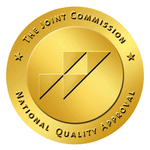“There is almost nothing outside of you that will help in any kind of lasting way, unless you are waiting for an organ. This is the most horrible truth.” – Ann Lamott
This truth also can be the most liberating. But you must first come to accept that you can’t fix anyone no matter how much you love and cherish them. And when that loved one abuses alcohol and/or illegal drugs, focusing inside yourself rather than outside on your loved one’s problems is a challenge.
In this article, we briefly review the main traps that family and friends of addicts can fall into when it comes to loving someone who is chemically addicted to alcohol or drugs. What’s the antidote to these traps? Dig in and do the work…on YOURSELF.
More On Worrying
When you love or care for an addict, worry and “what if” become constant companions.
- What if he loses his job?
- What if she can’t take care of her kids?
- What if he lands in jail or prison?
- What if he kills someone in an auto accident?
- And worst of all, what if he dies from a drug overdose or the cumulative effects of alcoholism?
To put it another way, consider this. One person (often young) dies every 4 minutes from alcohol or other drug related problems. That’s 15 every hour or 360 every day. This is equivalent to a jumbo jet falling from the sky with no survivors every day of the year.
Enabling: Well Intentioned But Misguided
However, our worries and “What ifs” cause us to rush in and assume responsibility for our loved one’s destructive behavior. It’s called enabling and it’s a stinker. I read somewhere that addicts crave enabling like plants need water. We enable because we want to protect our loved ones. We enable because we don’t want our family to be disgraced. We enable because we don’t know what else to do. We enable because we don’t want our husband, wife, daughter or son to become another fatal statistic.
Although misguided, our actions are well-intended. After all, family and friends help one another when a member is in need. However, if our loved ones have any chance of recovery, we must get out of their way and let them take responsibility for their behavior. Enabling is not helping! We need to move the spotlight from them and shine it directly at us. To take a long, hard look inside ourselves, even when we don’t like what we see. “This is the most horrible truth.”
Accepting this horrible truth was a challenge when my adult son was abusing drugs. A loving mom, I enabled, big time. When my son stole money from me, I ignored it. When his checks bounced, I covered them. When he landed in jail, I bailed him out. And when the phone rang in the middle of the night, my heart raced.
No amount of nagging, preaching, begging, or threatening, worked. Finally, when I had enough, I went to my first twelve-step meeting and was told flat out, “This program is about you, not about your loved one.” Say what? How can this be? I was there to learn how to fix my son. I didn’t need fixing. He did.
Digging In
Turns out that nothing changed until I decided to dig deep inside myself. To toss aside my “God suit” and face the naked truth that I was the one who needed fixing. (More here on tools of codependence recovery.)
During a support group meeting, someone said, “All you have to do is to be willing.” To be willing to make recovery a priority. To be willing to unearth unhealthy behavior. To be willing to abandon my pride and embrace humility. To be willing to admit my faults, fears, and frustrations.
I’ve learned that almost everything inside of me: my thoughts, actions, beliefs, and attitudes, determines how I live my life with all of its joys and sorrows. I have choices. I can choose to live in the grip of my loved one’s addiction or I can choose to become free. This is the most liberating truth.
Do You Love An Addict? Let Us Know…So, do you love an addict but can’t get free from worry or enabling patterns? Are you looking into how to address addiction and family issues? Please leave us a comment in the section below. We’ll do our best to respond to you personally and promptly. You are not alone.
Photo credit: leasqueaky


 RSS Feed
RSS Feed
